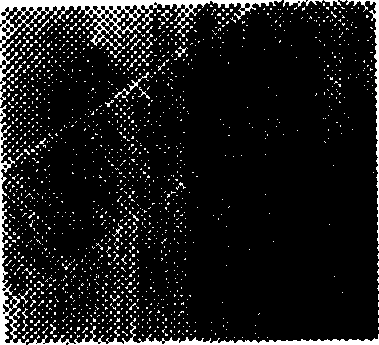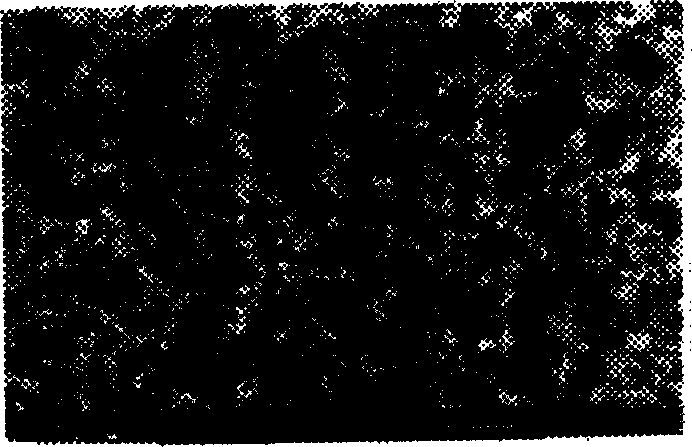Filtration-based microarray chip
A filter-type, chip-based technology, applied in the field of system composition for detecting specific proteins, can solve problems such as instability of the activation layer
- Summary
- Abstract
- Description
- Claims
- Application Information
AI Technical Summary
Problems solved by technology
Method used
Image
Examples
Embodiment 1
[0117] Assay specificity, sensitivity, reaction kinetics and dynamic range
[0118] We experimentally investigated the following issues to characterize the main features of the filter chip technology of the present invention, including the ability of cellulose membranes to bind fluorescently-labeled and unlabeled proteins. We compared cellulose membrane and glass slide-based protein chips and demonstrated the advantages of filter-based protein chips over shaking-based chips, including faster reaction speed, extended dynamic range, reduced background and improved detection specificity. We also demonstrate the specificity and uniformity of the reaction of a high-throughput multi-chip overlapping filtration system, and the use of filtration technology to enhance the application of phycobilisomes and quantum microparticles. Finally, we demonstrate the filter-type double-antibody sandwich technology and its potential clinical applications.
[0119] Mater...
Embodiment 2
[0184] Double Antibody Sandwich-Filter Chip Technology
[0185] The present invention shows that compared with directly labeling antigens, the double-antibody sandwich method has higher specificity and sensitivity. In addition, the filter-type double-antibody sandwich method is also better than the double-antibody sandwich method in the shaking mode. Combining the use of CEA double-antibody sandwich method and filter-type chip technology, we can effectively detect 5 ng / ml of CEA in blood.
[0186] experimental method
[0187] The protein chip can realize the combined detection of multiple antigens in the patient's blood. The characteristic concentration of carcinoembryonic antigen selected in this case in clinical diagnosis is 5-10 ng / ml, which is 1 / 10 of the total protein concentration in blood 6 . In order to specifically detect carcinoembryonic antigen in blood by direct labeling protein method, the binding ability of carcinoembryonic antigen...
Embodiment 3
[0199] Example 3. Detection of thrombin with filter-type aptamer chip
[0200] Aptamers are a family of single-stranded oligonucleotides that can bind to different molecules after screening. Its binding objects include small organic molecules, peptides and proteins. Compared with antibodies, aptamers are easier to synthesize. A variety of aptamers have been developed, one of which has a high binding affinity for thrombin. In this study, we used this thrombin-specific aptamer as a model system to show that a filter-type aptamer chip can detect fluorescently labeled thrombin. In particular, we investigated the specificity, sensitivity and kinetic range of the technique and compared the reaction kinetics of the filtering and oscillating aptamer chips.
[0201] Materials and methods
[0202] The aptamer specific to thrombin was pre-labeled with biotin (5'-biotin-6 carbon-GGTTGGTGTGGTTGG, purchased from Integrated Gene Company), and then mixed with neostreptomycin and printed on...
PUM
| Property | Measurement | Unit |
|---|---|---|
| Diameter | aaaaa | aaaaa |
| Aperture | aaaaa | aaaaa |
Abstract
Description
Claims
Application Information
 Login to View More
Login to View More - R&D
- Intellectual Property
- Life Sciences
- Materials
- Tech Scout
- Unparalleled Data Quality
- Higher Quality Content
- 60% Fewer Hallucinations
Browse by: Latest US Patents, China's latest patents, Technical Efficacy Thesaurus, Application Domain, Technology Topic, Popular Technical Reports.
© 2025 PatSnap. All rights reserved.Legal|Privacy policy|Modern Slavery Act Transparency Statement|Sitemap|About US| Contact US: help@patsnap.com



